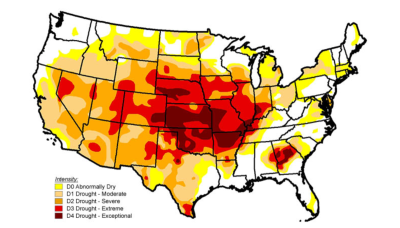Advancing Climate Predictions With Novel Land Data Assimilation System
Earth system models are important tools for making climate predictions and projections. While climate projections have a strong dependence on future socioeconomic scenarios, initial conditions are critical for making skillful climate predictions at subseasonal-to-decadal timescales. Researchers have developed a new, weakly coupled land data assimilation (WCLDA) system based on the four-dimensional ensemble variational (4DEnVar) method and applied it to the Energy Exascale Earth System Model version 2 (E3SMv2). This system integrates soil moisture and temperature data from the Global Land Data Assimilation System (GLDAS) to improve the initial conditions for climate predictions. By including the data assimilation system, scientists demonstrated enhanced simulation accuracy of soil moisture and temperature for better understanding and predicting climate variability and extreme weather events.
Data assimilation is an essential component of operational weather and climate forecasting systems. Previous efforts emphasized the importance of assimilating observed atmosphere states for weather forecasting and observed ocean states for climate predictions. Land data assimilation is not commonly used to initialize the land surface states, even though the latter can significantly influence weather and climate predictions through land-atmosphere interactions and their impacts on the oceans. This study introduced a WCLDA system in E3SM. This advanced assimilation system provides significant improvements in capturing the variability of soil moisture and temperature in the E3SM simulations, which is crucial for predicting climate and extreme events like droughts. By enhancing the initialization of land surface conditions in E3SM, this system helps improve the overall predictability of climate events, offering valuable insights for climate research and decision-making in resource management.
Researchers have developed a 4DEnVar-based WCLDA system for E3SMv2, aimed at improving initial conditions for climate predictions. This system integrates soil moisture and temperature data from GLDAS into the land component of E3SMv2, leading to better simulation accuracy. Evaluation metrics such as root-mean-square error and temporal correlation showed significant improvements for both soil moisture and temperature, particularly in South America, central Africa, Australia, and large parts of Eurasia. This system also successfully captured the temporal evolution of the 2012 U.S. Midwest drought, demonstrating its potential to improve drought predictions and overall climate forecasting capabilities.

